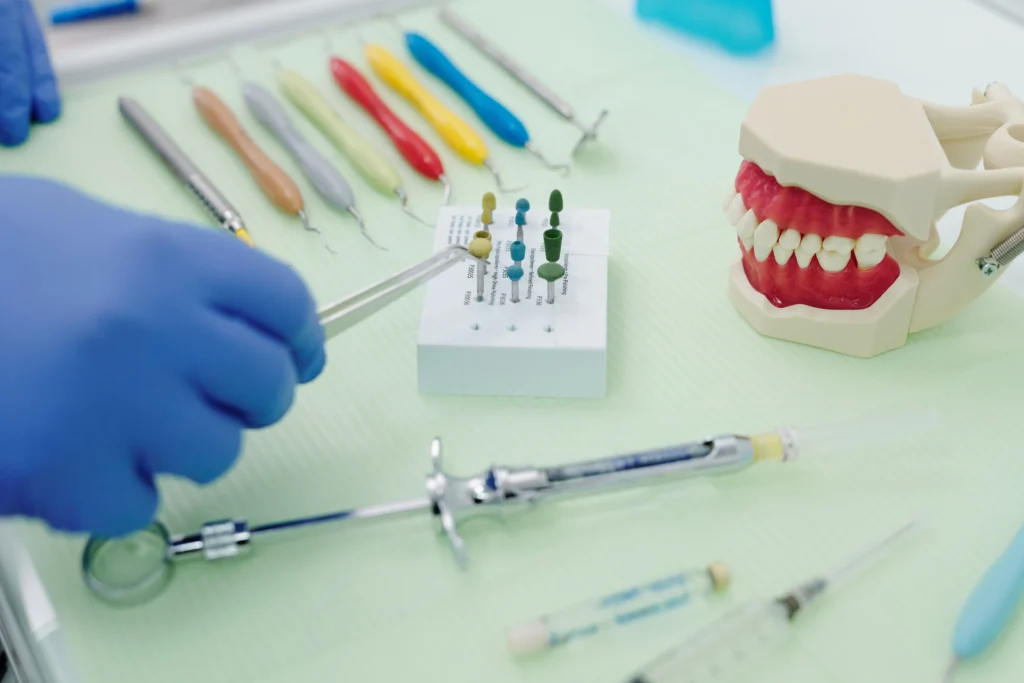+1 (254) 773-1672
manager.hqdentaldesign@gmail.comContact Info
-
Address
3126 Thornton Ln,
Temple, TX 76502 -
Phone
+1 (254) 773-1672
-
Email
manager.hqdentaldesign@gmail.com
Newsletter Subscribe
Get healthy tips & latest updates in inbox.© Temple Tx Dental 2023, All Rights Reserved.
Root Canal Treatment
Temple TX Dental
- Home
- Root Canal Treatment Temple TX Dental
Root Canal Treatment Temple TX Dental

A root canal is a popular dental procedure to save a tooth that is badly infected or damaged. When the soft tissue inside the tooth, called the pulp, becomes infected can cause serious pain. In most cases, the dentist recommends root canal treatment to address this issue.
If you are having similar symptoms or any other dental problems and living in Temple TX or nearby areas then visiting us is the best solution. Our expert dentists will examine your teeth in depth and consult the best treatment for you. We are located in Temple TX 76502 and serve patients in nearby areas. To find out more about our services you can visit our clinic or call us at +1 (254) 773-1672
Ari Marco
HQ Dental team have done fantastic high quality routine and cosmetic work on my teeth as well as my families. There is no better dentist in Georgetown.
Tan Nguyen
HQ Dental is among the best dental clinics I have visited. I think their secret is the true care of patients.
Anastassia Moser
Everyone who worked in my mouth was extremely gentle, yet thorough. They’ve certainly found a patient for life
Expectation From The Root Canal Treatment
Root canal treatment, also known as endodontic treatment, is a dental procedure used to get rid of an infection within a tooth. This procedure is carried out within the tooth's pulp, specifically targeting the root canal and defending the tooth from future infections.
It is It takes place in the nerve of the tooth, also known as a root canal.

Quick Facts On Root Canal Treatment
1- This root canal treatment is normally used to remove the nerve from the a tooth's pulp.
2- This treatment is known as painful but actually, this is a pain relieving treatment.
3- This treatment of the root canal is called endodontic therapy.
4- Root canal treatment requires vary, but it is a less expensive alternative to having a tooth extracted and replaced with a crown or bridge.
Root Canal Treatment: What it is?
A root canal treatment is not just a therapy but is the part of the teeth. The pulp, which is the soft or empty section of a tooth, includes nerve tissue, blood vessels, and other cells.
Factors Increasing the Risk of Periodontal Disease (Pyorrhea)
A tooth contains 2 parts
The root and the canals, the crowns hang above the gum, while the roots are beneath it. The roots connect the teeth and crown to the jawbone.
The pulp is found within the crown and root, which is additionally referred to as the root canal. The pulp is what feeds the tooth and hydrates the underlying material. The tiny nerves in the pulp believe both extremes of temperature are painful.
This procedure is called Root canal and this is Endodontic therapy
Which is known as “ inside the Teeth”
Root canal treatment is performed in three steps and usually takes one to three sessions to complete.
Steps for Root Canal
This therapy is described in three steps and it is completed in three sessions
1. Root canal cleanings
Initially, the dentist removes everything from the root canal.
With the patient under local anaesthesia, the dentist creates a small access hole on the exterior of the tooth and uses very small files to remove the infected and dead pulp cells
2. Root Canal Fillings
After that, the dentist cleans, shapes, and removes the empty area with tiny files and watering solutions. The tooth is subsequently filled with a rubber-like material, and the canals are entirely sealed using secure cement.
After root canal treatment, the tooth is no longer functional. The individual will no longer experience pain in that tooth because the nerve tissue has been eliminated and the infection has been eliminated.
3. Placing a crown or filling.
Fortunately, the tooth will be less durable than it was before. A tooth without pulp has to depend on the ligament which links it to the bone for food. This supply is sufficient, but the tooth eventually grows fragile, leading to the use of a crown or filling for safety.
The patient should avoid chewing or biting on the tooth until the crown or filling has been accomplished. After a crown or filling is placed, the person can resume normal use of the tooth.
Therapies typically require only one appointment, but if there are curved canals, various canals, or large infections, it may require one or two more appointments.
Is Root Canal Treatment Painful?
A number of the most common concerns about this type of treatment is that it will be discomforting; nevertheless, treatment carried out by an experienced dental surgeon will likely be more pain-free.
The feeling of discomfort you feel is caused by the infection, not by the course of therapy. The therapy does not affect pain instead it helps ease it.
The dental physician will use local anaesthesia to relax the tooth as well as the area, removing pain during the entire procedure.
It is normal to experience a little discomfort after therapy. It is only temporary, and over-the-counter (OTC) painkillers may suffice to relieve it. If necessary, medicinal products such as codeine are accessible.
The oral surgeon can give antibacterial agents to treat or stop infection

Is Root Canal Treatment Painful?
A number of the most common concerns about this type of treatment is that it will be discomforting; nevertheless, treatment carried out by an experienced dental surgeon will likely be more pain-free.
The feeling of discomfort you feel is caused by the infection, not by the course of therapy. The therapy does not affect pain instead it helps ease it.
The dental physician will use local anaesthesia to relax the tooth as well as the area, removing pain during the entire procedure.
It is normal to experience a little discomfort after therapy. It is only temporary, and over-the-counter (OTC) painkillers may suffice to relieve it. If necessary, medicinal products such as codeine are accessible.
The oral surgeon can give antibacterial agents to treat or stop infection.
Who has Needs for It?
If the pulp is injured or diseased, it cannot heal on its own, and the tissue expires.
Bacteria can enter the pulp with deep cavities, broken teeth, or loose dental fillings.
The bacteria will ultimately decompose the pulp. If bacteria reach the root openings, they can infect the bone.
A viral infection decreases and destroys bone. The connective tissue around the tooth will expand and the tooth will break down.
A pulp damage makes the tooth hypersensitive to both high and low temperatures. It may be pain but chewing, and some people experience fixed, sharp pain.being treated, the disease will spread. In the end, the tooth will
become loose and require extraction.
few patients select extraction, particularly if the procedure is painful or if the tooth cannot be fixed, for example, if there is deep decay, trauma, or bone loss due to periodontal disease, or gum, disease.
However, taking off a tooth could cause the teeth that surround it to move and become uneven. This will sightly make it difficult to eat properly.
Root canal treatment usually saves the tooth and reduces pain.
If unfortunately, the tooth is unable to be saved, the best substitute is an implant.
However, if at all possible, it is more beneficial to save the natural tooth because nothing functions equally well.
Is It Very Costly ?
The expenses of dental treatment vary extensively, but preserving the tooth with a root canal is comparatively inexpensive.
The alternative option is extraction, which usually results in a higher cost for an implant or connection to replace the tooth. The extraction can also cause malocclusion and problems with chewing.
Disorders
Disorders may arise during any procedure.
1. Occasionally a dentist finds only three root canals in a tooth that has four. If a single canal remains unattended, the infection might travel to the bone.
2. The dental professional additionally needs to make sure that the filling material enters far enough into the canal to fill it up. If the root canal is not sealed correctly, the disease could come back.
3. During this treatment, the tooth's root may crack, and the tools may break or cut the canal. This makes it hard to fill the tooth correctly.
If these disorders arise, a specialist can attempt to resolve the issue and finish the root canal.
To avoid disorders, patients should always follow their dentist's guidelines. If you need an antibiotic, make sure to finish the entire prescription.
After root canal treatment, a permanent remediation, such as a crown, must be put in place.
Prevention
To avoid diseases, decay of the teeth, and gum disease, dentists suggest:
1. Brushing teeth only at bedtime and at least once more per day.
2. Using fluoridated toothpaste
3. Using a suitable toothbrush and changing it regularly
4. going to periodic dental examinations and cleaning procedures.
5. brushing and flossing to clean the teeth to avoid the buildup of bacteria.
6. preventing sweet drinks and foods, and keeping up a nutritious diet.
Get Root Canal Treatment at Temple TX
Root canal treatment becomes necessary when the pulp becomes infected and causing serious pain. If left untreated, the infection can spread, and cause further issues.
In the whole process, the dentist numbs the area to prevent pain and then makes a small opening in the tooth to remove the infected pulp. The inside of the tooth is then cleaned, disinfected, and filled with a special material to prevent future infections. Finally, the tooth is sealed and often covered with a crown to restore its strength and function.
Most patients are concerned about the pain but it is a pain-free treatment as you are under local anesthesia. Yes, you might feel a bit discomfort afterward but it will get normal over time.
After the process, our dentist will guide you about the future steps and how to maintain basic oral hygiene that prevent it from happening in future.
On average it takes 30 to 60 minutes to perform the root canal, and it's a one-visit work. But, if one has a severe infection or complicated tooth structure then it can take 2-3 visits.
If you are living near Temple TX 76502 and nearby areas and require a root canal treatment then visit our dental clinic. And, meet our expert doctors like Dr. Hiep Pham and Dr. Quyen Tran. They will look at your condition and consult the best treatment for you. Feel free to visit our dental clinic in Temple TX and get relief for any sort of dental problemes.
